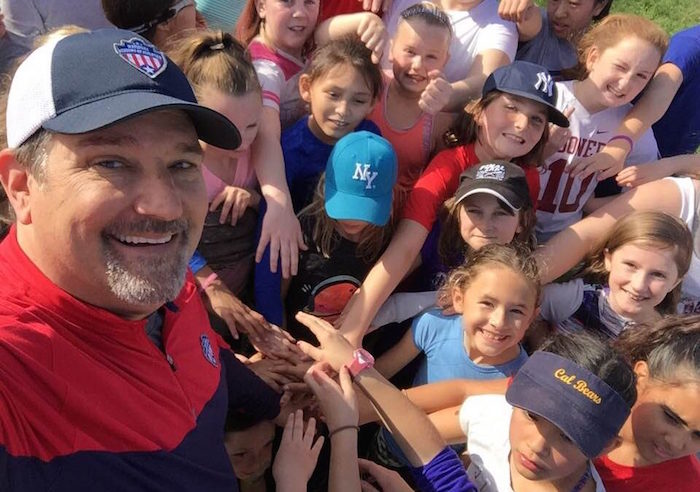Talk, Teach, Play. Sounds simple enough! And it’s the backbone behind the National Academy of Athletics tremendous youth sports camp success. When Aaron Locks set out to build the sports camp behemoth, he asked himself and his staff “visionary” questions – among them, “how to train young athletes”?
As a result of those conversations, Locks and company created “Talk, Teach, Play! 3•6•6”
With over 70 cities participating in their camp programs, the NAofA deploys techniques specific to teaching younger-aged athletes.
Also, many of those athletes, they find, are experiencing summer camp and/or sports camp for the very first time.
They require special care to impart in as short an amount of time as possible, enough data to teach and engage without “losing” the young audience attention!
Additionally, put these techniques in play for your team and see how your youth athletes engage, learn and have fun!
How to train young athletes the TALK – TEACH – PLAY! way.
Locks shares, We use a teaching cycle to make sure that the players have a chance to learn, work on their skills and then use it!
We use teaching stations and by dividing players up into smaller groups, we find that they will have a greater learning curve.
Today kids have a very short attention span. Also, by using cycles of a maximum of 15 minutes they don’t have a chance to get bored. Plus, they stay engaged and they have more fun!
Furthermore, these skill cycles can be repeated for any given skill. However, by mixing it up, players will want more and more, and in turn they will begin to learn at a more rapid pace.
How to train young athletes – 15 minute teaching cycle:
TALK: Skillful Instruction
3 minutes of a verbal instruction of, what, how, when, why — and what’s in it for them.
Use the same terms that you want them to remember and use teaching “cues” so that you are not always having to shout instructions.
TEACH: Dynamic Drills
6 minutes of actual teaching / or working on the skill. Whatever the skill is, use drills that allow the players to have some success. As well, as a clear understanding of the skill they are learning and how it will be used in games.
PLAY: Friendly Competition
6 minutes of fun challenges or competitions using what they just learned.
If you can help the players to have fun and feel challenged using the skills you have just taught them, it translates into better success come game day.
Minimal directions and corrections is recommended at this stage; just reinforce the rules of the game.
Perhaps the National Academy of Athletics sums up their coaching success in four simple, yet poignant words:
Play Hard – Have Fun!
Contributed for SportStars by
AARON LOCKS (See Aaron’s profile)
Connect: aaron@naofa.us

